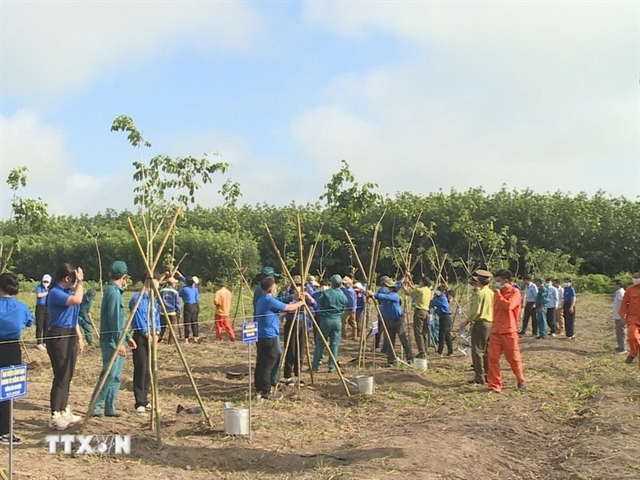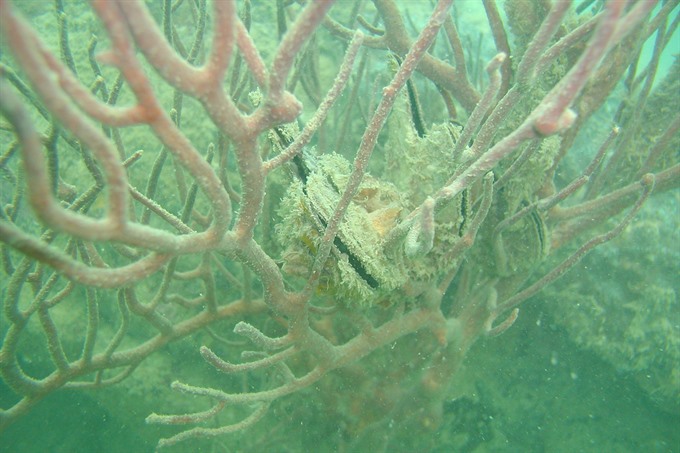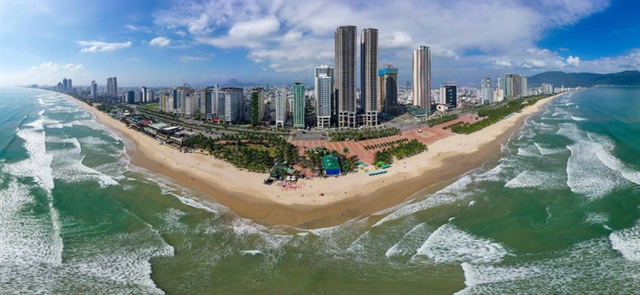 Environment
Environment

Scientists have found nearly 12,000 Vietnamese marine creature species, including animals and plants, through studying the country’s marine biological resources, reported the Vietnam News Agency.
 |
| Branch coral in the waters off Bái Tử Long National Park in northeast Việt Nam. — VNA/VNS Photo |
HÀ NỘI — Scientists have found nearly 12,000 Vietnamese marine creature species, including animals and plants, through studying the country’s marine biological resources, reported the Vietnam News Agency.
The study, carried out in three periods (before 1954, from 1954 to 1975 and from 1976 to now), proved that Vietnamese seafood sources are diversified, including over 2,000 fishes, nearly 6,000 benthic animals, 653 seaweed species, five tortoise species and 12 species of sea snakes.
It defined the distribution zone, reserves and exploitation potential of several groups of marine creatures with high economic value such as fish, shrimp and cuttlefish. Reserves of benthic fish and pelagic fish were from 3.0 to 3.5 million tonnes (not including distant migration pelagic fish and fish living in near islands), with exploitation potential of 1.5 to 1.7 million tonnes.
Marine biologist Đỗ Công Thung from the Institute of Marine Environment and Resources said the study was part of a master research programme about marine ecosystems which has given a full picture of the natural conditions of coastal zones, providing a complete information set about the basic marine physics and chemistry and the distribution and displacement of basic ecosystems such as river mouth, mangrove forest, lagoon, sea grass and coastal marshes.
This was an important foundation for making plans to develop economics, society, diplomatic politics, security and national defence in coastal zones, and especially the plans on developing aquaculture, ecotourism and marine preservation in coastal provinces in Việt
Research on diversifying marine products is also considered a positive way to reduce the pressures on traditionally exploited species. Mollusca such clam, mussel and sweet snails are being exploited and cultivated only after fishes. Over the past year, scientists from the Việt Nam Academy of Science and Technology have discovered many high value substances from several species such as coral and medusa.
In addition, researchers have also assessed the decline in coastal resources and dangers to biological resources, including environmental pollution, climate change and fishing methods that cause overexploitation.
Study orientation
Regarding the study’s orientation through 2020 on marine creature species, Thung said the study on marine creature resources over the past years also has shortcomings. It only focused on coastal areas with a few studies on offshore areas; coastal resources were over-exploited and there was more study of fish sources than on other aquaculture.
With the goal of launching an ocean study in the next five years, Vietnamese scientists need to strengthen their staff, extend international co-operation, invest in equipment and focus on comprehensive study on large marine areas.
It is important to adequately and exactly assess the reserves of Việt
It is also necessary to promote research applying biological technology to the protection of resources and marine environment, such as building marine reserves, and models to restore ecosystems and protect resources.
Việt

.jpg)

.jpg)
